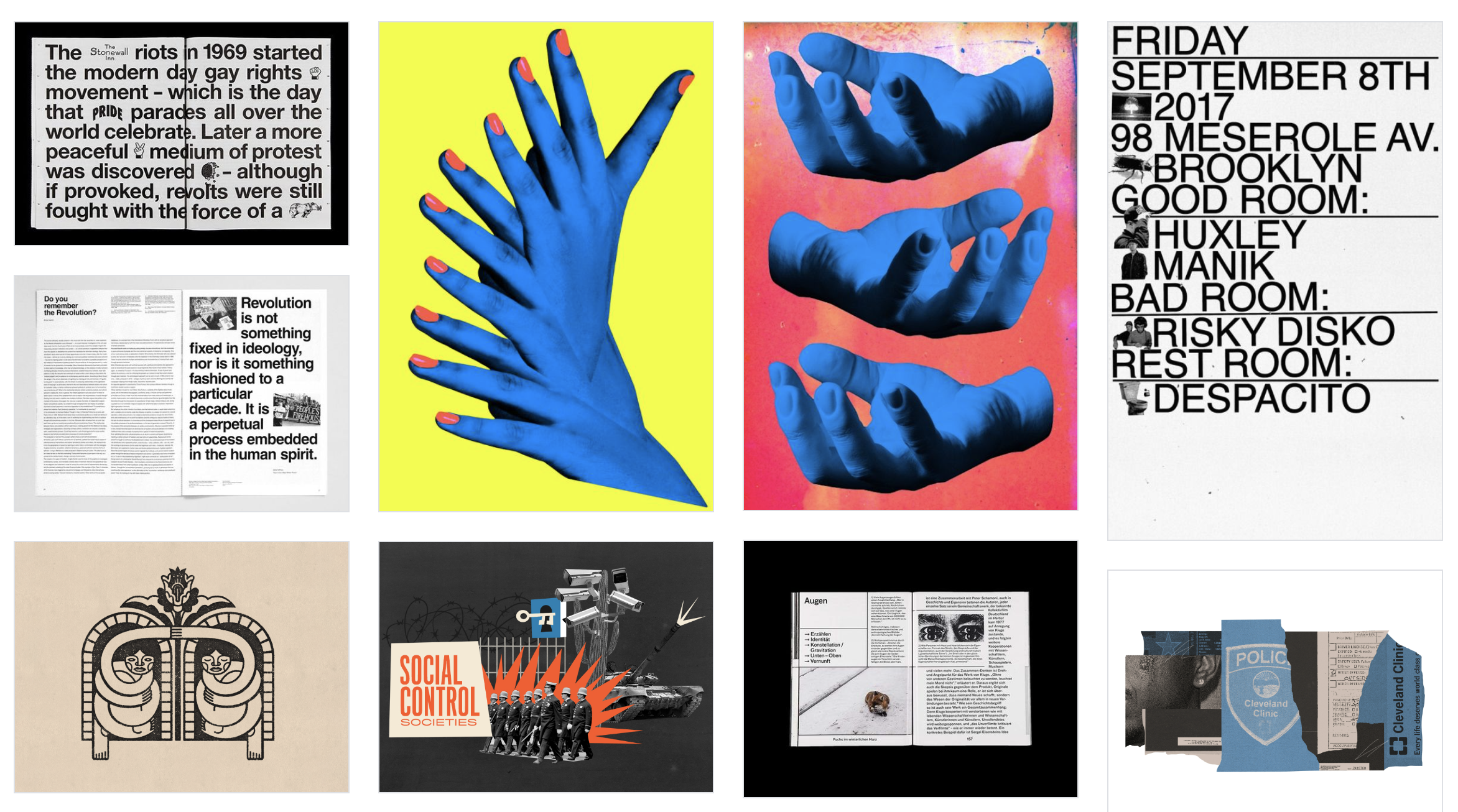

The mood board for the campaign emphasized imagination, clarity through text, and the use of collage in undermining state violence
In a time of grief, confusion and rage, calls for hate crime legislation from the Asian and Asian American community were a heavy reality to confront. In our “scramble for legibility,” people often mistaken state protection for safety. And at the same time, if we are truly to understand intersectionality and cross-racial solidarity, we must find alternatives to the police on our streets and in our own heads. It was a chance to heal without furthering the trauma of the state, and a chance for others to understand liberation that didn’t come at the cost of the people, particularly Black, Indigenous, disabled, queer and trans people of color.



Committing to an Abolitionist Framework
Several organizers wrote a moving and nuanced pledge for organizations to sign and commit to deepening their relationship to abolition. The pledge named hard things like, being transparent about funding or understanding both the suffering and privilege of Asian and Asian American communities in the eyes of the police state. You can read and sign the full pledge here.
The design of the campaign began from a place of self-reflection. The mechanical claw extracting the police car from the figure’s head is a call to end the policing mentality within ourselves — to deepen our relationships with each other so that no one is thrown away or sacrificed to the state. I pulled police reports like the one from the infamous Peter Liang case for background imagery, to underscore that policing is an Asian/Asian American issue.


The Resource Hub
Putting my research skills to work, I compiled an online anthology of abolitionist resources separated by topic and subdivided by resource type. For accessibility purposes, I also included a column to indicate length of resource, payment requirements and language options. I prioritized resources written by people from those communities, to ensure that people could access knowledge from these writers, artists and organizers as directly as possible. You can visit the Resource Hub online to view more.
Anchoring Organizations
If you are able, please follow and support these organizations doing the work of abolition.
